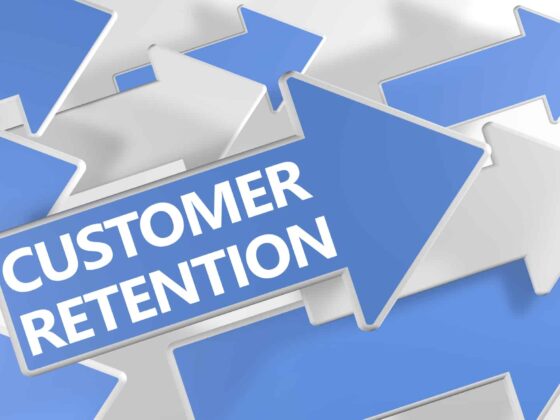Today, technology serves as the backbone for organizations striving to operate efficiently and meet ever-changing consumer demands. Nonetheless, despite the rapid pace of innovation, new technological solutions often fall short of solving core industrial challenges.
Bridging this gap promises the development of optimized systems that can tangibly affect bottom lines and drive sustainable growth. Failure to properly align technology with business needs can lead to wasted investment and inefficient operations, while successful integration unlocks new competitive advantages. With the right strategies, companies can harness the power of technology to gain crucial edges over rivals.
Understand True Industry Needs

The first and arguably most crucial step towards developing relevant technological solutions is comprehending the nuanced challenges inherent in industry workflows. Yet, technologists and developers rarely immerse themselves fully into operational contexts, leading to a disconnect between product development and actual business needs. This detachment often results in building products that address hypothetical problems rather than real-world challenges.
Cross-functional engagement and collaboration between developers, engineers, and business leaders is essential to ensure that both sides gain a deeper understanding of core priorities. Activities such as shadowing warehouse floor processes, riding along delivery routes, or taking part in customer service interactions offer technologists an experiential understanding from end-user perspectives. These invaluable insights shape pragmatic solutions that resolve tangible workplace frictions and bottlenecks. An aligned vision between business stakeholders and technologists focuses inventions on applications that matter most to the organization.
Research Existing Innovations

Many technologists inadvertently reinvent the wheel by failing to conduct thorough research into existing marketplace solutions before embarking on product development. However, reviewing current offerings reveals real distinctions between transformative applications and incremental improvements. Such analysis also highlights open gaps representing underserved business needs with space for disruption.
For example, while supply chain analytics platforms provide visibility into operations, they may lack advanced inventory automation features. Observing and analyzing technology ecosystems within specific industries thus steers projects towards developing truly unique value propositions over duplicative offerings that add little differentiation. Comprehensive market research ensures that new solutions deliberately enhance existing categories rather than engaging in needless reinvention.
Leverage Proven Technologies

Building upon established technologies with proven business utility reduces risk while accelerating the realization of value for organizations. For instance, most supply chain data flows across legacy enterprise resource planning (ERP) databases. Connecting new inventory optimization tools directly into these trusted systems via secure APIs enhances adoption and usability.
Workers can access innovations within familiar environments instead of toggling between new platforms, minimizing disruption and training requirements. Vertically integrating with incumbent technologies also allows businesses to use existing device infrastructure, data warehouses, and staff competencies. This approach drives faster return on investment (ROI) by leveraging the full capabilities stack already in place.
Visual data plays a critical role in business operations, especially in marketing, product design, and customer engagement. Integrating advanced tools like the AI photo generator from Adobe can significantly improve the quality and efficiency of visual content creation. This tool transforms text descriptions into high-quality images with remarkable detail, lighting, and color accuracy. Organizations can streamline their creative processes, reduce design turnaround times, and maintain consistent visual standards across platforms, all while leveraging familiar design ecosystems.
Design For Enterprise Integration
Ensuring that new technologies seamlessly integrate with incumbent IT systems streamlines wide adoption across organizations. Solutions requiring data replication, extensive employee retraining, or significant changes to existing workflows hamper usage at scale. Prioritizing the creation of unified dashboards that sync inputs from multiple databases is crucial.
For example, IoT sensors tracking assets can feed real-time transit visibility into the central logistics platform. Enabling single sign-on from company portals further enhances user experience and adoption. Such frictionless interoperability makes adding new data streams and analytics modules simple throughout operations. Smooth integration and expansions through modular architectures simplify the management and evolution of technology within the organization.
Quantify Value Delivery
Technologists often struggle to quantify the actual value that innovations can provide businesses beyond conceptual improvements. However, presenting numeric ROI projections is essential to secure executive buy-in for adoption. Rigorously detailing how solutions will achieve specific cost savings, risk reductions, productivity gains, revenue increases, or other tangible benefits is crucial.
For example, the experts at Blues.com say that an IoT-equipped smart warehouse utilizing supply chain IoT may promise exact inventory visibility that lowers safety stocks by 20% while optimizing product flows to fulfill orders 7% faster on a weekly basis. Reliable metrics that demonstrate meaningful operational impacts, rather than merely showcasing technical capabilities, are key.
Accelerate Time-To-Value

Lengthy technology development cycles also inhibit responsive innovation, addressing immediate business obstacles, as competitive landscapes keep evolving rapidly. Applying agile principles, such as minimal viable product (MVP) iterations, focuses invention on deploying the simplest function delivering useful advantages first. The subsequent series of incremental enhancements then grows capabilities based on continuous user feedback.
For example, initial AI algorithms may automate just 5% of customer service queries. Quickly launching that limited bot allows for improving accuracy while already lowering costs before achieving fuller self-service goals. Prioritizing rapid-cycle testing wins real-world feedback to prevent over-engineering isolated from customer contexts.
Co-Create Forward Roadmaps
Joint technology road mapping ensures that products continue optimizing value after launch as business needs change over time. Annual planning meetings between cross-functional leadership openly discuss emerging challenges alongside projections from data science teams.
For instance, does supply chain robotics require enhanced sensors to handle more use cases or load variability? Regular check-ins verify if current features still resolve primary pain points effectively. Such ongoing alignment reveals where expanding automation, predictive analytics, or equipment integrations can address upcoming needs.
Mutual input from business and technology stakeholders forges innovations that continually evolve to solve dynamic priorities rather than rigid solutions that lag behind business progress. Prioritizing fluid dialogue prevents gadgets from diverging into flashy but less useful tools over long horizons.
Conclusion
In the end, successful technology adoption hinges on solving tangible business challenges better than existing processes. Avoiding common missteps around isolated development, duplication of efforts, and over-engineering ensures the creation of meaningful solutions that drive real value.
Technologists should thoroughly research markets, quantify ROI projections, and co-design roadmaps tuned to real-world contexts in close collaboration with business stakeholders. Building atop proven platforms and leveraging existing infrastructure also accelerates the delivery of innovations that tangibly enhance operations.
With informed strategies bridging the gap between emerging technologies and evolving commercial needs, businesses can implement innovative systems that enhance productivity, service quality, and growth potential for years to come.


